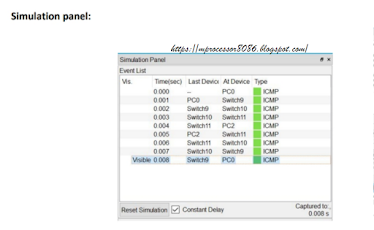- Every particular network is built onto one of the network topologies . Network topologies are quite important to give a definite structure to the network we want to build. The network topologies need different network components like the switch, cable, hub, etc .
- The different topologies have their own pros and cons. But its our choice to decide which network topology we want to work with according to our need from the network.
- There are various parameters on which we judge the type of topology we choose, parameters can be cost, how large your organisation is, speed, tracking pf packets and monitoring them, and many more.
- If we need to customise the netwok topology by merging 2 or more than 2 topologies then we can opt for the 'Hybrid Topology'. One of the example of hybris can be - bus topology with star topology.
- The step by step process of simulation in different network topologies is shown below. The experiment displays the implementation of topologies using Cisco packet tracer simulator.
Theory:-
Devices on network are nodes. The most common nodes are computers & peripherals.
There are different types of network topologies as follows:
Bus Topology :-
• The bus, topology uses one main cable to which nodes are directly connected. The main cable acts as a backbone for network One of the computers in network acts server.
• Advantages include ease of installation. Backbone can be laid along most efficient path connected to lines of various lengths
Star Topology :-
• In this each computer is connected to central hub using poin-to - point connection. Central hub can be computer server manages network or can be simpler device that makes connections between computers over network possible.
• Advantages are :- It is very popular because startup costs are low. Easy to add new nodes .
• Disadvantage :- N/W Network is robust in sense that if central hub fails entire network goes down.
Mesh Topology :-
• Every device is connected to another device via dedicated channels known as links - Suppose N devices are connected total no q ports required by each device is N-1.
• Advantage :-Mesh topology is robust & provides security & privacy. Fault is diagnosed easily Data Transfer is reliable
• Disadvantage :-but installation & configuration is difficult Cost of maintainance is high
Output:-
The below is practical demonstration of using cisco packet tracer to implement star topology.
Subject wise experiment list with Source code links :-






Good Content
ReplyDelete